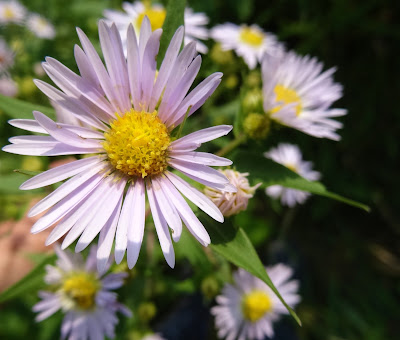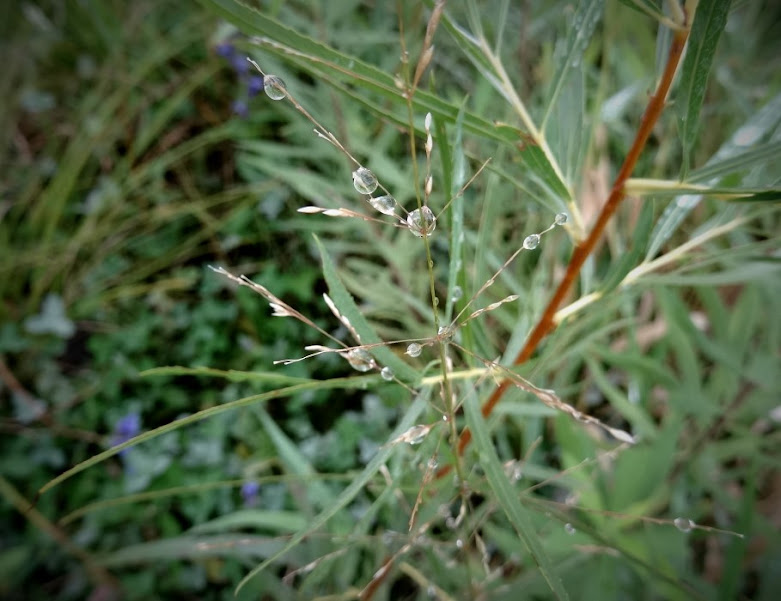Boneset Eupatorium perfoliatum has a stout hairy stem, and the plant's leaves occur along it opposite to one another. In autumn, the flowers go to seed, and leaves turn a rich red-brown color.
The leaves are described as 'perfoliate' because each joins the opposite leaf around the stem so it appears the stem grows through one large leaf. All parts of this plant are toxic and bitter. Birds rarely eat the seeds, but are attracted to the flowers for the many insects there.



























